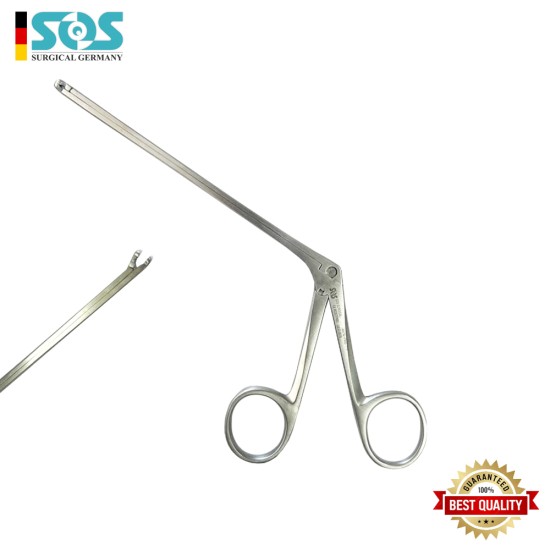A wide collection of specialized instruments for otology procedures, for diagnosing and treating various ear conditions, are widely utilized. In Germany, these tools are commonly sought after online. They are particularly suited for use in hospital operating rooms, day surgery centers, and private clinics attended by otologists, ENT specialists, or ear specialists. The range of instruments used in otology contains knives, tympanum perforators, forceps, punches, ear scissors, specula, and tuning forks.
There is a global need for standardized tools and accompanying services to ensure efficient and high-quality surgical care across different healthcare settings. Although efforts have been made to establish resource standards with assessment tools and equipment lists, their application has been largely limited to general surgery, emergency care, and other specialized surgical contexts. The significant burden imposed by otolaryngological disorders such as hearing loss, otitis media, head and neck cancer, head trauma, and upper airway foreign bodies has been recently emphasized. Nevertheless, a comprehensive inventory of materials necessary for the basic care of most otolaryngological diseases is yet to be developed.
Drawing from an internal survey conducted among its members, the Global Otolaryngology-Head and Neck Surgery Initiative has compiled a catalog of essential equipment and services for the fundamental care of otolaryngological conditions. The initiative aims to address prevalent otolaryngological issues identified as high-priority due to their widespread occurrence and impact on health. This curated list, crafted by experts, serves as a fundamental tool for internal quality assessment, research on implementation, formulation of health policies, and prioritization of economic resources.
Ear Forceps
Ear forceps are indispensable tools for various ENT procedures, including nasal packing, soft tissue manipulation, ear tube insertion, and cerumen or foreign object removal. They also assist in aural packing. Our selection includes various types such as Alligator, Hartman, Wullstein, Wilde, and Lucae Ear Forceps, all crafted from durable German stainless steel for ergonomic and strong performance in surgical settings.

Ear Hook
During operations or inspections, medical equipment known as an “Ear Hook” is used to grip or move tissues within the ear. Usually, these hooks have a curved or hook-shaped end, making it possible to handle and position delicate tissues or equipment inside the ear canal. Healthcare practitioners frequently use them when performing examinations, performing ear operations, or extracting foreign things from the ear. Ear hooks reduce the possibility of harm to the patient’s ear structures while assisting in maintaining safe and efficient treatments. Ear Funnel and Ear Forceps are also used in ear surgeries.
Ear Funnel
The instrument features a wider end designed to ignite like a candle. As the waxed cone burns, it emits heat that gently warms and softens earwax. Simultaneously, it creates a slight vacuum within the ear canal, facilitating the outward suction of softened earwax.
Paracentesis Needles
Paracentesis is a medical procedure conducted on patients with ascites, where a needle is inserted into the peritoneal cavity to extract ascitic fluid. This fluid is then analyzed to diagnose the cause of ascites or to eliminate the possibility of peritoneal fluid infection, a process known as diagnostic paracentesis. An 11-blade scalpel for incision, a 14-gauge catheter connected to a 17-gauge × 6-inch needle with a self-sealing valve and a three-way stopcock or one-way valve, and a 5-mL Luer Lock syringe for fluid extraction are the devices used during paracentesis. Similarly, a 60 mL syringe is utilized to gather the ascitic fluid. These tools are necessary to carry out paracentesis—a surgery that removes extra fluid from the abdominal cavity—safely and successfully in patients who suffer from disorders like ascites.
Cotton swab
In-ear surgery, cotton swabs are frequently used for a variety of purposes. Before surgery, they can be used to clean the external ear canal carefully, clearing away any extra wax or debris that might block the operative field. Cotton swabs can also be used to apply drugs or fluids to the surgical site or ear canal during surgery. They can also be used to soak up extra fluid or blood during surgery so the surgeon can see well. It’s important to remember that cotton swabs should only be used sparingly during ear surgery to prevent harm to delicate tissues like the eardrum.
Conclusion
Access to essential tools and support services for otolaryngology-head and neck surgery (OHNS) care is a major problem for healthcare systems around the world. Surgical specialists have created essential resource checklists to evaluate infrastructure capacities and direct targeted resource allocation. Expert-curated and painstakingly constructed, this list of otology tools provides a core framework that may be modified for internal quality assessments, health policy development, and financial planning. In the end, these care delivery instruments aim to raise the standard of otology care given and enhance global health outcomes.